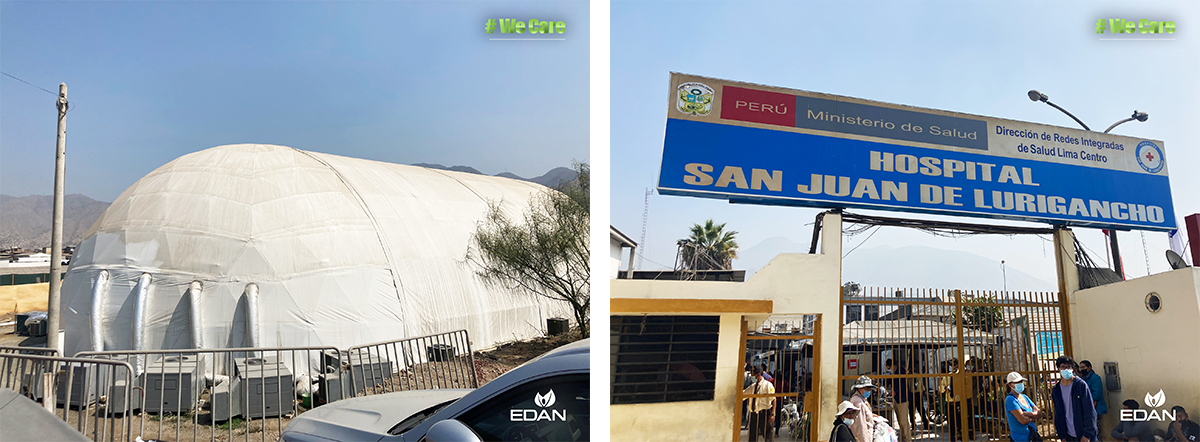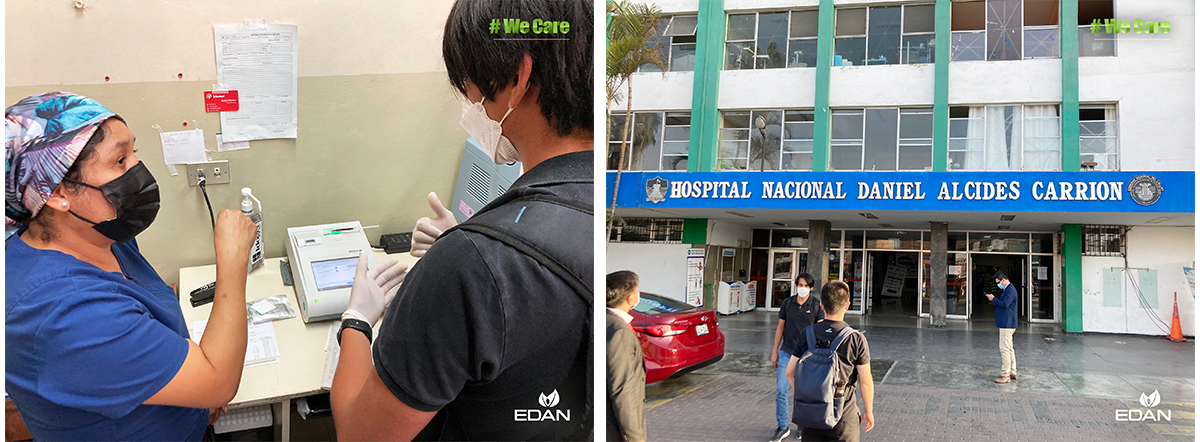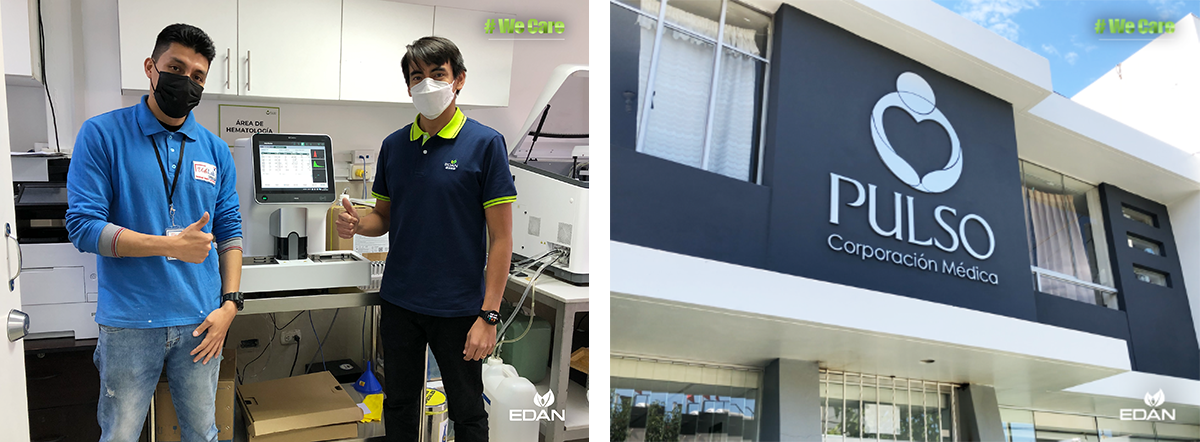
Healthcare in Peru is rather above average in a worldwide comparison, but it still faces structural barriers to providing accessible and quality care[1]. The major concern is the shortage of healthcare resources. Medical care provided by doctors and hospitals in Peru is below average compared to the world population. With about 42,400 physicians in Peru, there are about 1.27 doctor恬涧s per 1000 inhabitants[2].
Supporting Early Detection through Powerful ABG Machine i15
The problem was further exposed, especially in the midst of a worldwide pandemic. Until August 21th, 2022, a total of 215,5159 deaths have been reported in Peru. Experts attributed the high death rate to insufficient early detection. “We look to identify patients and provide them with the needed level of care before their condition worsens and they end up in critical condition.” Said Jean-Baptiste Marion, head of the international medical humanitarian organization Doctors Without Borders/Médecins Sans Frontières (MSF). It clearly shows the importance of ABG tests during the pandemic, which can help healthcare providers interpret conditions that affect patients'碴萍 respiratory systems, especially in emergencies.
To support the local anti-epidemic work, a larger number of EDAN i15 Blood Gas and Chemistry Analyzer were installed in ER and ICU 移迫in Peruvian hospitals , including the mobile cabin hospital inside the Hospital San Juan de Lurigancho, Lima. Located northeast of Lima, San Juan de Lurigancho (SJL) is the most populated district in Peru. More than 10% of Lima'姊途s population lives here. During the preventive maintenance this year, the EDAN team attaches great importance to positive interaction with hospital staff, seeking to delve into users’ demands and raise users’ degree of satisfaction and loyalty.

A Meticulous Feedback Collection on the Spot
“Medical staff had already stretched beyond capacity at that time, while intensive care resources were insufficient to meet people’s needs.” Said staff from the mobile cabin hospital. Most of cases, operators of ABG tests are d滔财octors and nurses. Therefore, easy maintenance and operation of the equipment are significant. EDAN POCT team attaches particular importance to the user needs and experience in practical application scenarios. As a POC machine, i15 has attracted a set of local hospitals for its clinical performances. With zero maintenance and easy operation, it aims to reduce the operator workload and shorten the sample turn-around time by getting results within a minute.
Through this series of visits, EDAN also received high praise for the clinical performance of i15 in communications with other local clients, for instance, Daniel Alcides Carrion National Hospital, the other tertiary hospital in Bellavista, Lima. “This tour has been very instructive for all of us, because following up the installation on the spot will give 妈踊us more perspectives to improve our products and services,” said Tony Chen, EDAN IVD product line manager.

IVD Products Installation Covering Wide Range of User Needs
In addition to insufficient medical resources, Peru'敲芍s healthcare also faces other challenges. Since Peru’s healthcare workers are not equitably distributed, coastal and urban areas monopolize the majority of these providers[3]. “Lima and tourist coasts boast the highest distribution of healthcare workers, while rural and remote areas are home to few health providers,” stressed Eric Li, Peru Country Manager of EDAN. “That'孽亲s why EDAN is committed to developing a product matrix according to geographical needs.”
The IVD team provided various types of 5-part and 3-part hematology analyzers to meet the demands of different regions after in-depth research of local characteristics, covering small, medium, to high-volume laboratories. Pulso Salud, an 儡特international chain of medical laboratory centers in Arequipa with a large volume requirement, recently chose EDAN H60S Hematology Analyzer to cover daily testing needs.
For the healthcare facilities in rural and remote areas places which have a limite聊效d budget, EDAN provides cost-effective systems like H30 Pro Hematology Analyzer. With up to 120 days on board stability, zero complex maintenance, customizable printout format, and the improved fluidic system reducing reagent consumption, H30 Pro was developed to help clinical laboratories to achieve better outcomes at a lower cost. “Paying more attention to application details during the R&D process is based on our understanding and insight of the front line, and we always put ourselves in the shoes of end-users to consider practical issues,” said Victor Pereda Criado fro欺栗m EDAN.

While the going is slow, Peru is striving to reform its healthcare system. The country is doing this by reforming its healthcare system in the direction of universal coverage – an achievable but certainly strenuous goal[4]. Additional expansions in health care infrastructure, lowering barriers to access, and modernizing public sector institutions, all the improvements have laid the groundwork to achieve universal coverage.
By providing more comprehensive and regionally targeted healthcare solutions, EDAN hopes to strengthen cooperation with all walks of life仓泣 in the local community and contribute to the efforts to move forward with healthcare in Peru.
Reference
[1] Blaya, J. A., Shin, S. S., Yagui, M. J., Yale, G., Suarez, C. Z., Asencios, L. L., ... & Fraser, H. S. (2007). A web-based laboratory information system to improve quality of care of tuberculosis patients in Peru: functional requirements, implementation and usage statistics. BMC medical informatics and decision making, 7(1), 1-11.
[2] Healthcare in Peru:
[3] Yáñez, J. A., Jahanshahi, A. A., Alvarez-Risco, A., Li, J., & Zhang, S. X. (2020). Anxiety, distress, and turnover intention of healthcare workers in Peru by their distance to the epicenter during the COVID-19 crisis. The American Journal of Tropical Medicine and Hygiene, 103(4), 1614.
[4] Vladeck, B. (2003). Universal health insurance in the United States: Reflections on the past, the present, and the future. American Journal of Public Health, 93(1), 16-19.




